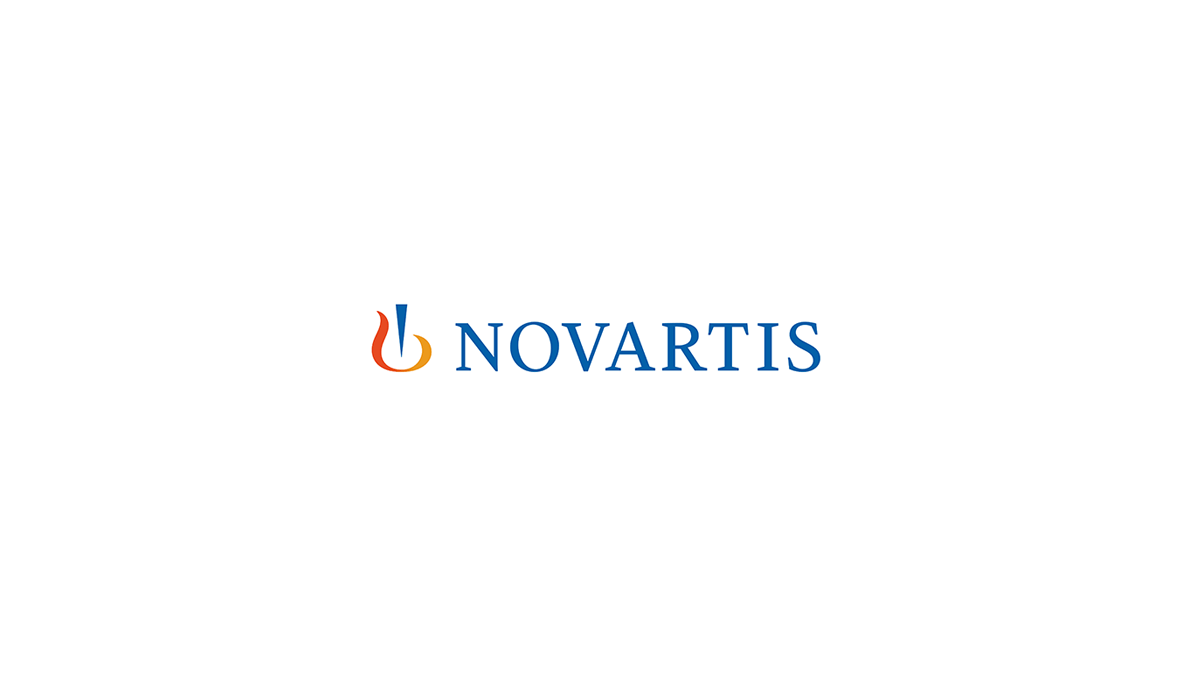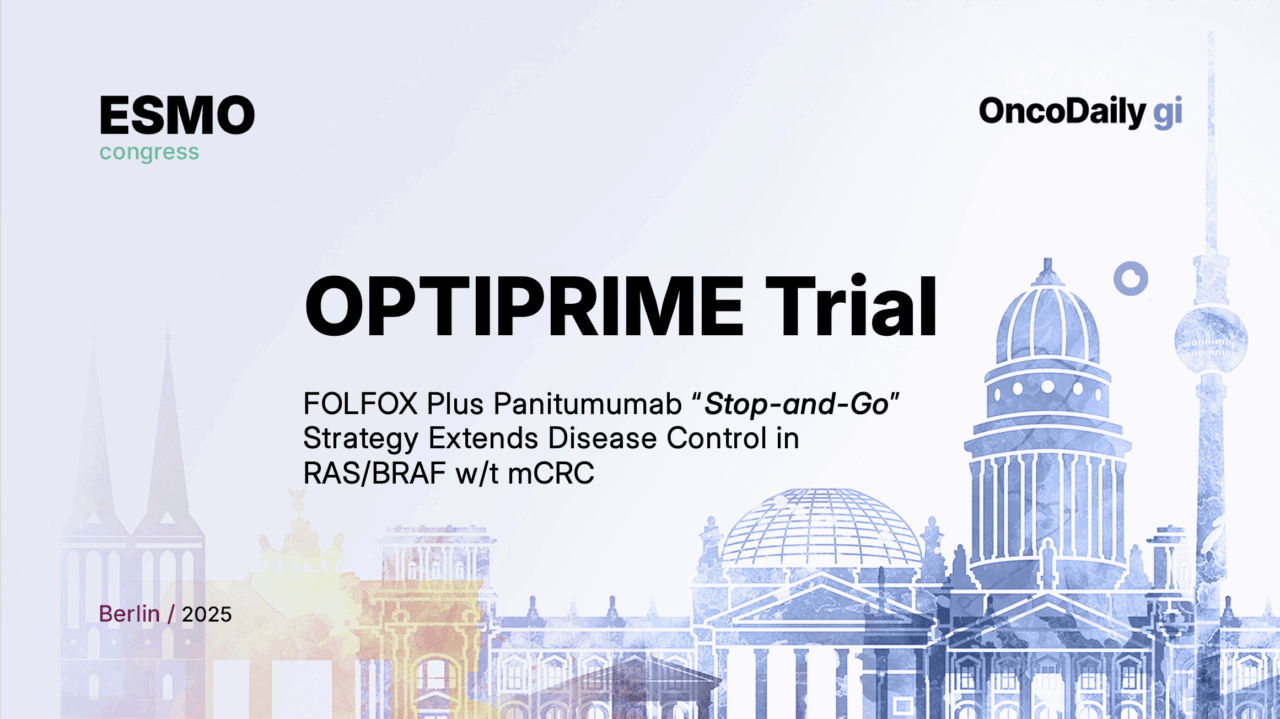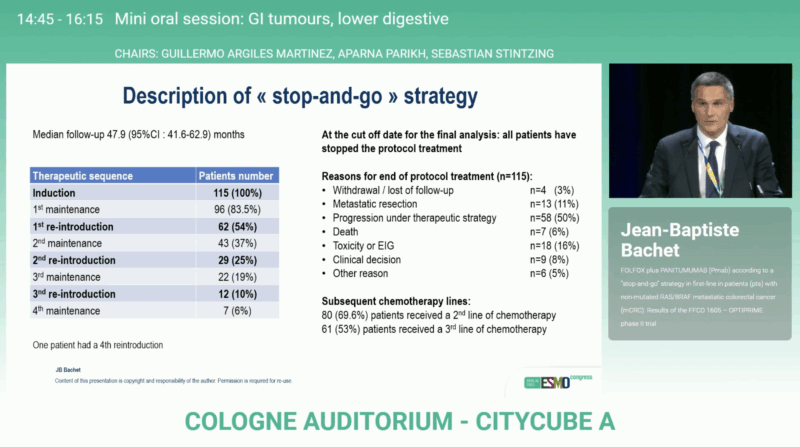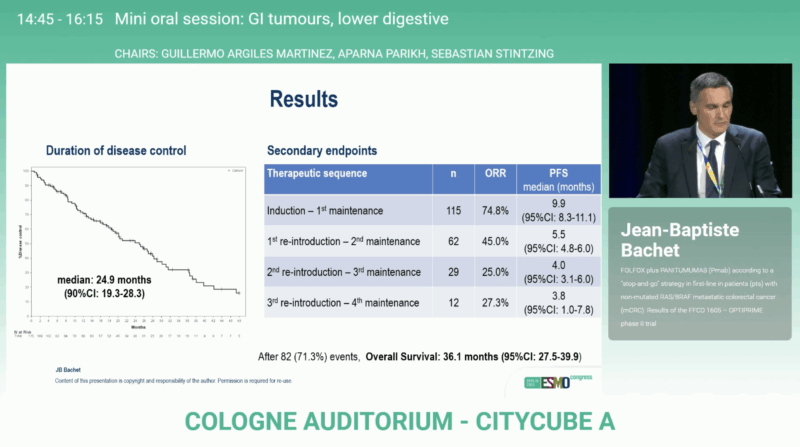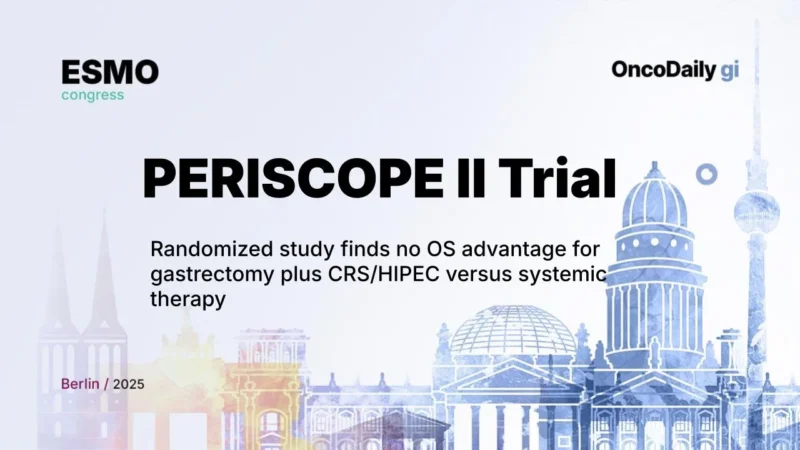- PluvictoTM plus standard of care (ARPI + ADT) significantly reduced risk of progression or death by 28% (HR 0.72) versus SoC alone, with positive trend in OS (HR 0.84) in PSMA+ metastatic hormone-sensitive prostate cancer (mHSPC)1
- Most patients with mHSPC progress to metastatic castration-resistant prostate cancer, underscoring urgent need for new therapies that can reduce risk of progression in earlier disease settings2,3
- The safety profile and tolerability of Pluvicto in this third positive Phase III study were consistent with its established profile in PSMAfore and VISION trials1,4,5
- Novartis plans to submit to regulatory authorities by end of year; potential approval would double the number of patients eligible for Pluvicto and further establish its efficacy in metastatic prostate cancer settings
Basel, October 19, 2025 – Novartis today presents new Pluvicto™ (lutetium (177Lu) vipivotide tetraxetan) data from the Phase III PSMAddition trial in a Presidential Symposium at the European Society for Medical Oncology (ESMO) Congress 2025.
Pluvicto plus standard of care (SoC) (androgen receptor pathway inhibitor [ARPI] + androgen deprivation therapy [ADT]) demonstrated a statistically significant and clinically meaningful improvement in radiographic progression-free survival (rPFS), reducing the risk of radiographic progression or death by 28% (HR 0.72; 95% CI: 0.58, 0.90) versus SoC alone in patients with prostate-specific membrane antigen (PSMA)+ metastatic hormone-sensitive prostate cancer (mHSPC)1.
Results also show an early positive trend in overall survival (OS) in patients treated with Pluvicto plus SoC (HR 0.84; 95% CI: 0.63, 1.13); follow-up will continue until data are mature1. More patients achieved a complete response versus SoC alone (57.1% vs. 42.3%) and the overall response rate (ORR) was numerically higher in the Pluvicto plus SoC arm (85.3% vs. 80.8%)1. Pluvicto delayed time to progression to metastatic castration-resistant prostate cancer (mCRPC) (HR 0.70; 95% CI: 0.58, 0.84)1. The rPFS benefit was consistent across pre-specified subgroups1.
“In metastatic prostate cancer, choosing the most efficacious treatment early is crucial, even at initial diagnosis,” said Scott T. Tagawa, MD, a professor of medicine at Weill Cornell Medicine and a medical oncologist at NewYork-Presbyterian/Weill Cornell Medical Center. “These findings suggest that combining 177Lu-PSMA-617 with standard of care hormonal therapy offers patients more time without disease progression, a safety profile with adverse events that are most often low grade and managed with supportive care, and an encouraging trend in overall survival.”
“These results reinforce the potential for Pluvicto, a radioligand therapy that delivers treatment directly to target cells, to change how we treat metastatic prostate cancer,” said Shreeram Aradhye, President, Development and Chief Medical Officer, Novartis. “With significant benefit now shown across multiple disease stages, Pluvicto is redefining the standard of care. The strength of these results reflects our deep commitment to patients with prostate cancer and our leadership in radioligand therapy.”
The safety profile and tolerability of Pluvicto were consistent with its established profile in PSMAfore and VISION1,4,5. Grade ≥3 adverse events (AEs) were reported in 50.7% of patients in the Pluvicto plus SoC arm, compared to 43% on SoC alone1. The most common all-grade AEs were dry mouth, fatigue, nausea, hot flush and anemia1.
PSMAddition marks the third positive Phase III trial with Pluvicto1,4,5. Building on the significant benefit demonstrated in PSMAfore, which led to the US Food and Drug Administration (FDA) approval in pre-taxane mCRPC in March 2025, these new results strengthen the evidence base for Pluvicto and demonstrate its potential to improve outcomes in an even earlier stage of metastatic prostate cancer1,4,6. Novartis plans to submit these data to regulatory authorities before end of year.
About unmet need in mHSPC
Approximately 172,000 men are diagnosed with mHSPC each year across the US, China, Japan, France, Germany, Italy, Spain and the United Kingdom1. Most patients progress to mCRPC, typically within 20 months2,3,7,8. Progression to mCRPC is associated with significantly worse outcomes, including increased patient burden, worse quality of life and life expectancy less than two years9,10. More than 80% of patients with prostate cancer highly express the PSMA biomarker, making it a promising therapeutic target11–15.
About PSMAddition
PSMAddition (NCT04720157) is a Phase III, open-label, prospective, 1:1 randomized study comparing the efficacy and safety of Pluvicto in combination with SoC (ARPI + ADT) vs. SoC alone in adult patients with PSMA+ mHSPC16. The primary endpoint is rPFS, defined as the time to radiographic progression by PCWG3-modified RECIST V1.1 (as assessed by BIRC) or death16. The key secondary endpoint of OS is defined as time to death due to any cause16. The study remains ongoing and a total of 1,144 patients with mHSPC across 20 countries have been randomized in the trial16.
About Pluvicto™ (lutetium (177Lu) vipivotide tetraxetan)
Pluvicto is an intravenous RLT that combines a targeting compound (a ligand) with a therapeutic radionuclide (a radioactive particle, in this case lutetium-177)5,17. After administration into the bloodstream, Pluvicto binds to PSMA-expressing target cells, including prostate cancer cells that express PSMA, a transmembrane protein5,17. Once bound, energy emissions from the radioisotope damage the target cells and nearby cells, disrupting their ability to replicate and/or triggering cell death17.
Pluvicto is the only PSMA-targeted agent approved for PSMA+ mCRPC and is the first RLT to demonstrate a clinical benefit for patients with PSMA+ mHSPC in a Phase III trial1. Novartis is investigating Pluvicto in oligometastatic prostate cancer, an earlier stage of disease, in the PSMA-DC trial (NCT05939414).
Novartis and radioligand therapy (RLT)
Novartis is reimagining cancer care with RLT for patients with advanced cancers. By harnessing the power of targeted radiation and applying it to advanced cancers, RLT is designed to deliver treatment directly to target cells, anywhere in the body18,19. Novartis is investigating a broad portfolio of RLTs, exploring new isotopes, ligands and combination therapies to look beyond gastroenteropancreatic neuroendocrine tumors (GEP-NETs) and prostate cancer and into breast, colon, lung and pancreatic cancer. Novartis has established global expertise, with specialized supply chain and manufacturing capabilities across its network of RLT production sites. To support growing demand for RLTs, we have active production capabilities in Millburn (NJ), Zaragoza (Spain), Ivrea (Italy) and a state-of-the-art facility in Indianapolis (IN). Expansions are ongoing in Carlsbad (CA), where Novartis is establishing its third US-based RLT manufacturing site to support expanded use of RLTs, and Sasayama (Japan) to create resiliency and optimize delivery of medicines to patients.
Disclaimer
This press release contains forward-looking statements within the meaning of the United States Private Securities Litigation Reform Act of 1995. Forward-looking statements can generally be identified by words such as “potential,” “can,” “will,” “plan,” “may,” “could,” “would,” “expect,” “anticipate,” “look forward,” “believe,” “committed,” “investigational,” “pipeline,” “launch,” or similar terms, or by express or implied discussions regarding potential marketing approvals, new indications or labeling for the investigational or approved products described in this press release, or regarding potential future revenues from such products. You should not place undue reliance on these statements. Such forward-looking statements are based on our current beliefs and expectations regarding future events, and are subject to significant known and unknown risks and uncertainties. Should one or more of these risks or uncertainties materialize, or should underlying assumptions prove incorrect, actual results may vary materially from those set forth in the forward-looking statements. There can be no guarantee that the investigational or approved products described in this press release will be submitted or approved for sale or for any additional indications or labeling in any market, or at any particular time. Nor can there be any guarantee that such products will be commercially successful in the future. In particular, our expectations regarding such products could be affected by, among other things, the uncertainties inherent in research and development, including clinical trial results and additional analysis of existing clinical data; regulatory actions or delays or government regulation generally; global trends toward health care cost containment, including government, payor and general public pricing and reimbursement pressures and requirements for increased pricing transparency; our ability to obtain or maintain proprietary intellectual property protection; the particular prescribing preferences of physicians and patients; general political, economic and business conditions, including the effects of and efforts to mitigate pandemic diseases; safety, quality, data integrity or manufacturing issues; potential or actual data security and data privacy breaches, or disruptions of our information technology systems, and other risks and factors referred to in Novartis AG’s current Form 20-F on file with the US Securities and Exchange Commission. Novartis is providing the information in this press release as of this date and does not undertake any obligation to update any forward-looking statements contained in this press release as a result of new information, future events or otherwise.
About Novartis
Novartis is an innovative medicines company. Every day, we work to reimagine medicine to improve and extend people’s lives so that patients, healthcare professionals and societies are empowered in the face of serious disease. Our medicines reach nearly 300 million people worldwide.
Reimagine medicine with us: Visit us at https://www.novartis.com and connect with us on LinkedIn, Facebook, X/Twitter and Instagram.
Disclosure: Dr. Tagawa is a paid consultant for Novartis.
References
- Novartis. Data on file.
- Hussain M, Fizazi K, Shore ND, et al. Metastatic hormone-sensitive prostate cancer and combination treatment outcomes. JAMA Oncol. 2024;10(6):807-820.
- Kulasegaran T, Oliveira N. Metastatic castration-resistant prostate cancer: advances in treatment and symptom management. Curr Treat Options Oncol. 2024;25(7):914-931.
- Morris M, Castellano D, Herrmann K, et al. 177Lu-PSMA-617 versus a change of androgen receptor pathway inhibitor therapy for taxane-naive patients with progressive metastatic castration-resistant prostate cancer (PSMAfore): a phase 3, randomised, controlled trial. Lancet. 2024. doi:10.1016/S0140-6736(24)01653-2.
- Sartor O, de Bono J, Chi KN, et al. Lutetium-177–PSMA-617 for Metastatic Castration-Resistant Prostate Cancer. N Engl J Med. 2021;385(12):1091-1103. doi:10.1056/NEJMoa2107322.
- Pluvicto [prescribing information]. East Hanover, NJ: Novartis Pharmaceuticals Corporation; 2025.
- Verry C, Vincendeau S, Massetti M, et al. Pattern of clinical progression until metastatic castration-resistant prostate cancer: an epidemiological study from the European Prostate Cancer Registry. Target Oncol. 2022;17(4):441-451.
- Wenzel M, Siech C, Hoeh B, et al. Contemporary treatment patterns and oncological outcomes of metastatic hormone-sensitive prostate cancer and first- to sixth- line metastatic castration-resistant prostate cancer patients. Eur Urol Open Sci. 2024;66:46-54.
- Freedland SJ, Davis M, Epstein AJ, Arondekar B, Ivanova JI. Real-world treatment patterns and overall survival among men with Metastatic Castration-Resistant Prostate Cancer (mCRPC) in the US Medicare population. Prostate Cancer Prostatic Dis. 2024;27(2):327-333.
- Holmstrom S, Naidoo S, Turnbull J, et al. Symptoms and impacts in metastatic castration-resistant prostate cancer: qualitative findings from patient and physician interviews. Patient. 2019;12(1):57-67.
- Hope TA, Aggarwal R, Chee B, et al. Impact of 68Ga-PSMA-11 PET on management in patients with biochemically recurrent prostate cancer. J Nucl Med. 2017;58(12):1956-61.
- Hupe MC, Philippi C, Roth D, et al. Expression of prostate-specific membrane antigen (PSMA) on biopsies is an independent risk stratifier of prostate cancer patients at time of initial diagnosis. Front Oncol. 2018;8:623.
- Bostwick DG, Pacelli A, Blute M, et al. Prostate specific membrane antigen expression in prostatic intraepithelial neoplasia and adenocarcinoma: a study of 184 cases. Cancer. 1998;82(11):2256-61.
- Pomykala KL, Czernin J, Grogan TR, et al. Total-body 68Ga-PSMA-11 PET/CT for bone metastasis detection in prostate cancer patients: potential impact on bone scan guidelines. J Nucl Med. 2020;61(3):405-11.
- Minner S, Wittmer C, Graefen M, et al. High level PSMA expression is associated with early PSA recurrence in surgically treated prostate cancer. Prostate. 2011;71(3):281-8.
- Clinicaltrials.gov. NCT04720157. An International Prospective Open-label, Randomized, Phase III Study Comparing 177Lu-PSMA-617 in Combination With SoC, Versus SoC Alone, in Adult Male Patients With mHSPC (PSMAddition). Accessed October 2025. https://clinicaltrials.gov/study/NCT04720157.
- University of Chicago Medicine. Lutetium-177 PSMA Therapy for Prostate Cancer (Pluvicto). Accessed October 2025. https://www.uchicagomedicine.org/cancer/types-treatments/prostate-cancer/treatment/lutetium-177-psma-therapy-for-prostate-cancer.
- Jadvar H. Targeted Radionuclide Therapy: An Evolution Toward Precision Cancer Treatment [published correction appears in AJR Am J Roentgenol. 2017 Oct;209(4):949. doi:10.2214/AJR.17.18875]. AJR Am J Roentgenol. 2017;209(2):277-288. doi:10.2214/AJR.17.18264.
- Jurcic JG, Wong JYC, Knoc SJ, et al. Targeted radionuclide therapy. In: Tepper JE, Foote RE, Michalski JM, eds. Gunderson & Tepper’s Clinical Radiation Oncology. 5th ed. Elsevier, Inc. 2021;71(3):209-249.
# # #
